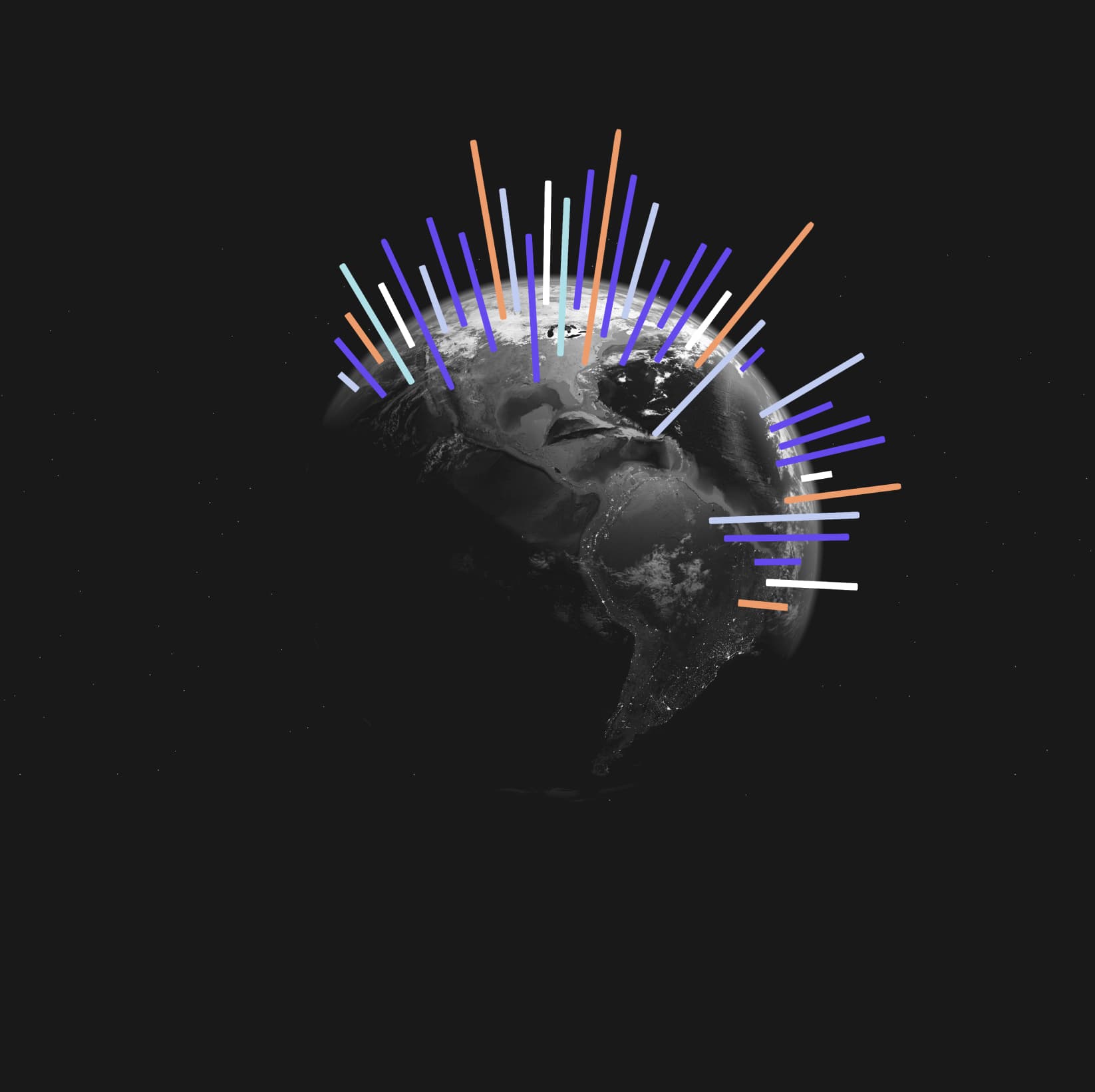In today’s fiercely competitive business landscape, gaining a competitive edge is the key to thriving in any industry. At the forefront of this pursuit lies Competitive Intelligence Analysis (CIA) – a powerful practice that provides businesses with the strategic insights needed to outperform their rivals.
Did you know that Competitive Intelligence Analysis (CIA) dates back to World War II when intelligence agencies used it to gather critical information about adversaries? Today, CIA goes beyond traditional spying and is an essential practice for businesses across all industries, helping them stay ahead of their competition.
In the next few pages, we’ll explore the significance of CIA, its role in identifying competitive threats, and how it empowers companies to make informed decisions and customise their strategies.
Whether you’re a newcomer to the world of competitive intelligence or seeking to bolster your existing knowledge, this article aims to equip you with the tools to leverage competitive intelligence and secure an advantage in your industry.
Let’s embark on a journey to discover how Competitive Intelligence Analysis can transform the way you do business.
The Value of Competitive Intelligence Analysis
Competitive Intelligence Analysis (CIA) plays a pivotal role in helping businesses understand the competitive landscape and anticipate market changes. In this section, we’ll explore the significance of CIA and how it empowers companies to stay ahead of the competition.
Understanding the Competitive Landscape
In any industry, knowing who your competitors are and understanding their strengths and weaknesses is crucial. Competitive Intelligence Analysis enables businesses to dive deep into the following key aspects:
1. Identifying Key Competitors
To gain an edge, it’s essential to first identify the main players in your industry. CIA allows you to pinpoint your direct competitors, as well as those who might be on the horizon. By understanding their strategies, market position, and offerings, you can formulate effective countermeasures and capitalise on their weaknesses.
2. Analysing Market Trends
Markets are dynamic, with trends constantly shaping customer preferences and industry dynamics. Competitive Intelligence Analysis provides valuable insights into prevailing market trends. This analysis helps businesses align their offerings with customer demands, stay relevant, and position themselves as leaders in the industry.
Coca-Cola’s competitive intelligence efforts played a crucial role in the success of its “Share a Coke” campaign, increasing sales by 2.5% in the U.S. alone.
Anticipating Market Changes
The ability to foresee market changes can be a game-changer for businesses. Competitive Intelligence Analysis facilitates this by enabling companies to:
1. Predict Customer Behavior
Understanding customer behaviour is essential for crafting effective marketing strategies and product development. CIA allows businesses to analyse customer preferences, pain points, and purchasing patterns. Armed with this knowledge, companies can tailor their offerings to meet customer needs and outperform their competitors.
2. Monitor Industry Disruptions
Industries are susceptible to disruptive forces that can reshape the competitive landscape overnight. By monitoring industry trends and innovations, businesses can identify potential disruptions early on. With this foresight, they can pivot their strategies and adapt to the changing market conditions, turning potential threats into opportunities.
In the automotive industry, competitive intelligence revealed that Tesla’s innovative electric vehicle technology was a significant threat to traditional automakers, leading them to invest heavily in electric vehicle R&D.
The value of Competitive Intelligence Analysis cannot be overstated. It equips businesses with the knowledge and insights needed to navigate the competitive landscape and anticipate market changes. By understanding key competitors, analysing market trends, predicting customer behaviour, and monitoring industry disruptions, companies can gain a significant edge in their industry.
RELATED: 5 Competitive Benchmarking Examples to Help Your Business Stay Ahead of the Game

Why Competitive Intelligence Analysis Leads to a Competitive Edge
Competitive Intelligence Analysis (CIA) goes beyond merely gathering data; it empowers businesses with the tools to make informed decisions and tailor their strategies effectively. In this section, we’ll explore how CIA translates into a competitive advantage through informed decision-making and strategic customisation.
Informed Decision-Making
Leveraging Data-Driven Insights
CIA is founded on collecting and analysing data from various sources, including market research, competitor analysis, and customer feedback. By basing decisions on solid data, businesses can gain a deeper understanding of market dynamics and make more informed choices. This data-driven approach enables companies to spot emerging trends, identify gaps in the market, and assess the potential impact of their decisions.
Reducing Risk and Uncertainty
Making decisions in a competitive business environment can be daunting, as the consequences of missteps can be significant. CIA mitigates risks by providing comprehensive insights into competitors’ actions and market conditions. Armed with this knowledge, businesses can avoid potential pitfalls and take calculated risks that are more likely to pay off.
Netflix’s data-driven decision-making and competitive intelligence analysis helped the company shift from a DVD rental service to a streaming giant, revolutionising the entertainment industry.
Tailoring Business Strategies
Customising Offerings to Beat Competitors
One-size-fits-all strategies rarely yield optimal results in a competitive market. Competitive Intelligence Analysis empowers businesses to differentiate their offerings from competitors. By understanding the unique selling points of their rivals, companies can position their products or services in ways that appeal to their target audience better. This strategic customisation helps create a strong competitive advantage that sets them apart from the crowd.
Finding Untapped Market Opportunities
Competitive Intelligence Analysis involves scanning not only the immediate competitors but also the broader market landscape. By doing so, businesses can identify potential gaps or untapped market opportunities. Whether it’s exploring new customer segments, entering emerging markets, or introducing innovative products, CIA enables companies to capitalise on opportunities that others might overlook.
Procter & Gamble’s competitive intelligence analysis led to the successful launch of Pampers, gaining a competitive advantage by understanding consumer needs and preferences better than their rivals.
Competitive Intelligence Analysis is a powerful tool that drives businesses toward a competitive edge. By making informed decisions based on data-driven insights and minimising risks and uncertainties, companies can navigate the dynamic business landscape with confidence. Moreover, by tailoring their strategies to outshine competitors and exploring untapped market opportunities, businesses can carve out a distinct market position that helps them stand out from the competition.
Competitive Benchmarking: Hypothetical Examples
Competitive benchmarking is a vital aspect of Competitive Intelligence Analysis that enables businesses to compare their performance with that of their competitors. By analysing product features, pricing strategies, and customer experience, companies can identify areas for improvement and gain a competitive edge. In this section, we’ll explore hypothetical examples of competitive benchmarking to illustrate its significance.
Product Features and Pricing
Case Study: XYZ Electronics vs. ABC Tech – Smartphone Comparison
Imagine two prominent smartphone manufacturers, XYZ Electronics and ABC Tech, competing head-to-head in the market. XYZ Electronics has recently launched its flagship smartphone with cutting-edge features such as a high-resolution display, an innovative camera system, and advanced biometric security.
On the other hand, ABC Tech has introduced a smartphone with a focus on long battery life, rugged design, and expandable storage options. By conducting a competitive benchmarking analysis, businesses can identify which features are resonating with customers and whether there’s a gap in the market for a smartphone that combines the best of both worlds.
Through in-depth research, companies can determine if they need to invest in improving their camera technology to match XYZ Electronics’ offering or enhance their phone’s durability to compete with ABC Tech. This analysis allows them to create a product that outperforms competitors and meets customers’ specific needs, ultimately gaining a competitive edge.
Analysing Pricing Strategies
In this hypothetical example, let’s consider how XYZ Electronics and ABC Tech set their smartphone prices. XYZ Electronics has adopted a premium pricing strategy, positioning its flagship phone as a high-end device with a corresponding higher price tag. In contrast, ABC Tech has opted for a more budget-friendly approach, targeting cost-conscious consumers with an affordable mid-range smartphone.
By benchmarking their pricing strategies against each other, businesses can identify the trade-offs between price and perceived value. They can determine if their own pricing aligns with market expectations and whether they need to adjust their pricing to attract a broader customer base. Analysing how customers respond to different pricing points can help companies optimise their pricing strategy and gain a competitive edge in the market.
In the smartphone market, Apple’s competitive benchmarking against Android devices led to the introduction of the App Store, a game-changer that set the iPhone apart from the competition.
Customer Experience
Case Study: XYZ Airlines vs. ABC Airways – Customer Satisfaction Ratings
Let’s consider the airline industry, where XYZ Airlines and ABC Airways are major competitors. XYZ Airlines has consistently received positive customer feedback, praised for its friendly and attentive cabin crew, efficient check-in procedures, and on-time arrivals. ABC Airways, on the other hand, has faced complaints about delays, poor baggage handling, and unresponsive customer support.
By benchmarking customer satisfaction ratings, businesses can learn from the success of XYZ Airlines and apply those practices to enhance their own customer experience. Companies can invest in training programs to improve their staff’s service skills, implement technology to streamline boarding processes and prioritise on-time performance to gain a reputation as a reliable and customer-focused airline.
Enhancing Customer Support and Services
Imagine XYZ Airlines has a well-established customer support system with multiple channels, including a responsive helpline, social media support, and a user-friendly mobile app for self-service. Meanwhile, ABC Airways lacks a comprehensive customer support infrastructure, leading to frustrated customers with delayed issue resolution.
By benchmarking their customer support practices against XYZ Airlines, businesses can identify gaps in their support services and invest in improvements. Implementing a robust customer support system, hiring skilled support agents, and leveraging technology to address customer inquiries promptly can significantly enhance the overall customer experience and set the company apart from competitors.
Remember that these examples are entirely hypothetical and are meant to illustrate the concepts of competitive benchmarking, product features and pricing analysis, and customer experience assessment. The actual data and details can be tailored to fit the specific industry or market you’re writing about in the article.
Competitive benchmarking revealed that Amazon’s pricing strategy was outperforming its rivals, leading to the adoption of dynamic pricing strategies in the e-commerce industry.

Understanding Competitive Threats
In a fiercely competitive business landscape, it’s essential to be vigilant and aware of potential competitive threats. Competitive Intelligence Analysis helps businesses identify and assess these threats, empowering them to formulate proactive strategies. In this section, we’ll explore the different types of competitive threats and how businesses can effectively address them.
Identifying Direct Competitors
Defining Direct Competition
Direct competitors are businesses that offer similar products or services, targeting the same customer base. These companies often vie for the same market share and may engage in price wars or aggressive marketing campaigns to gain an advantage.
Conducting Competitor Analysis
By analysing direct competitors’ strengths, weaknesses, and market positioning, businesses can gain insights into their rivals’ strategies and key differentiators. This analysis enables companies to understand how they measure up against their direct competitors and identify areas for improvement.
Differentiation Strategies
Understanding direct competitors’ offerings allows businesses to implement differentiation strategies. By highlighting unique features, exceptional customer service, or competitive pricing, companies can set themselves apart from the competition and attract customers looking for distinct value propositions.
Did you know that the rise of ride-sharing apps like Uber and Lyft posed a significant competitive threat to traditional taxi companies, leading to regulatory challenges and changes in the transportation industry?
Recognising Indirect Competitors
Defining Indirect Competition
Indirect competitors are businesses that offer different products or services that satisfy similar customer needs or desires. While not direct substitutes, they can still impact a company’s market share and customer base.
Identifying Indirect Competitors
To effectively recognise indirect competitors, businesses must broaden their market analysis beyond direct rivals. They should explore industries or businesses that offer alternative solutions to the same problems their target customers are facing.
Leveraging Cross-Industry Insights
By studying the strategies of indirect competitors, companies can gain cross-industry insights that may lead to innovative ideas and new business opportunities. Understanding the competitive landscape beyond traditional boundaries can spark creativity and foster a competitive edge.
Did you know that Kodak’s failure to recognise the threat of digital photography and adapt, led to the company’s decline? emphasising the importance of identifying and addressing competitive threats.
Addressing Potential New Entrants
Monitoring Market Entrances
New entrants can disrupt established markets and pose significant competitive threats. Competitive Intelligence Analysis involves actively monitoring for potential new players entering the market.
Assessing Market Disruption Potential
Understanding the disruptive potential of new entrants requires analysing their business models, funding sources, and unique value propositions. By evaluating these factors, businesses can gauge the severity of the threat and prepare appropriate responses.
Strategic Responses
Addressing potential new entrants may involve pre-emptive actions such as increasing marketing efforts, enhancing customer loyalty programs, or innovating to maintain a competitive edge. Alternatively, businesses can explore potential partnerships or acquisitions to neutralise the competitive threat.
Did you know that The video game industry faced a disruptive threat with the rise of mobile gaming? leading traditional gaming companies to adapt and develop mobile versions of their popular titles.
Understanding competitive threats is a critical component of Competitive Intelligence Analysis. By identifying direct competitors, recognising indirect competition, and addressing potential new entrants, businesses can proactively strategise and safeguard their market position.

Types of Competitive Analysis
To gain a comprehensive understanding of their competitive landscape, businesses employ various analytical frameworks. These competitive analysis methodologies help companies assess their position, identify opportunities, and formulate effective strategies. In this section, we’ll explore three prominent types of competitive analysis: SWOT Analysis, Porter’s Five Forces, and PESTEL Analysis.
SWOT Analysis (Strengths, Weaknesses, Opportunities, Threats)
Analysing Internal Factors: Strengths and Weaknesses
SWOT Analysis begins with evaluating a company’s internal factors. By identifying strengths, such as unique capabilities, a talented workforce, or a strong brand reputation, businesses can capitalise on their advantages. Simultaneously, acknowledging weaknesses, such as operational inefficiencies or limited resources, allows companies to address areas that require improvement.
Exploring External Factors: Opportunities and Threats
In the second part of the SWOT Analysis, companies focus on external factors impacting their business. Opportunities represent potential avenues for growth, like emerging markets or gaps in competitors’ offerings. On the other hand, threats encompass external factors that pose risks, such as new competitors or changing consumer trends.
Strategic Alignment
The ultimate goal of SWOT Analysis is to align internal strengths with external opportunities while mitigating weaknesses and threats. By capitalising on their strengths and seizing opportunities, businesses can position themselves to outperform competitors. Meanwhile, addressing weaknesses and countering threats ensures a more robust and resilient market position.
Porter’s Five Forces Analysis
Assessing Industry Competitiveness
Porter’s Five Forces Analysis evaluates the overall competitiveness of an industry. The five forces include the threat of new entrants, the bargaining power of buyers, the bargaining power of suppliers, the threat of substitute products or services, and competitive rivalry among existing players.
Understanding Market Dynamics
Each force influences industry profitability and attractiveness. By understanding these dynamics, businesses can assess the intensity of competition and potential profitability within their industry.
Formulating Strategic Responses
Porter’s Five Forces Analysis helps businesses develop appropriate strategies based on the competitive forces at play. For instance, a highly competitive industry may prompt companies to focus on differentiation strategies or operational efficiency to maintain profitability.
PESTEL Analysis (Political, Economic, Social, Technological, Environmental, Legal)
Scanning External Factors
PESTEL Analysis examines six macro-environmental factors that influence business operations: Political, Economic, Social, Technological, Environmental, and Legal. Each factor represents an external force that can impact a company’s performance and decision-making.
Identifying Opportunities and Threats
By analysing these factors, businesses can identify potential opportunities and threats. For example, technological advancements can open up new market segments, while changes in environmental regulations may pose challenges for certain industries.
Adapting to Market Conditions
PESTEL Analysis allows companies to adapt their strategies to changing market conditions. Understanding the implications of political decisions, economic trends, or technological advancements enables businesses to make informed decisions and maintain a competitive edge.
Competitive analysis plays a vital role in providing businesses with a holistic view of their competitive landscape. SWOT Analysis helps assess internal strengths and weaknesses while identifying opportunities and threats in the external environment. Porter’s Five Forces Analysis sheds light on industry competitiveness and strategic responses. PESTEL Analysis examines the broader macro-environmental factors influencing business operations. By leveraging these powerful analytical tools, companies can make data-driven decisions, stay ahead of the competition, and thrive in dynamic business environments.

Partnering with a Market Intelligence Platform
In today’s data-driven business landscape, having access to timely and comprehensive market intelligence is crucial for gaining a competitive edge. Market intelligence platforms like Trendata play a pivotal role in facilitating effective Competitive Intelligence Analysis (CIA). In this section, we’ll explore how businesses can benefit from partnering with Trendata and leveraging its capabilities.
The Role of Trendata in Competitive Intelligence Analysis
Streamlining Data Collection
Trendata acts as a centralised hub for collecting and organising market data. By automating data-gathering processes, businesses can save valuable time and resources, enabling them to focus on analysing and interpreting the data.
Did you know that Trendata aggregates and analyses over 5 billion search queries daily?
Gaining Competitive Insights
Trendata provides businesses with current and historical data on competitors’ performance, market trends, and customer behaviour. This wealth of information allows companies to gain deeper insights into their industry’s dynamics and make data-driven decisions.
Monitoring Competitor Activities
With Trendata, businesses can track their competitors’ product launches, marketing campaigns, pricing changes, and other key activities. This proactive monitoring enables companies to respond swiftly to emerging competitive threats and capitalise on market opportunities.
RELATED: The Benefits of a Competitive Analysis Matrix for Your Business
Accessing Comprehensive Market Data
Market Intelligence
Trendata offers access to a vast repository of market intelligence, covering various industries and regions. This intelligence provides valuable insights into market trends, customer preferences, and industry forecasts, helping businesses stay informed and make informed decisions.
Competitive Benchmarking Data
Trendata’s database includes comprehensive competitive benchmarking data, allowing businesses to compare their performance with that of their competitors. This data helps identify areas for improvement and areas of strength that contribute to a competitive advantage.
Customer Association Analysis
By analysing customer association data provided by Trendata, businesses can gauge customer issues, identify pain points, and tailor their offerings to better meet customer expectations.
RELATED: 5 Key Elements of a Successful Sustainable Competitive Advantage Strategy
Leveraging the Features of Trendata
Customisable Dashboards
Trendata’s platform offers customisable dashboards that allow businesses to visualise data and KPIs in a clear and intuitive manner. This feature facilitates quick and easy access to key metrics, enabling faster decision-making.
Market Trend Analysis
Trendata’s advanced analytical platform enables businesses to perform in-depth market trend analysis. Companies can identify emerging trends, assess their impact on the industry, and strategise accordingly.
Competitor Performance Tracking
Competitor performance tracking allows businesses to monitor their rivals’ market performance. By receiving updates on competitors, businesses can adjust their strategies to stay ahead in the market.
Partnering with a market intelligence platform like Trendata empowers businesses with a wealth of market insights and competitive intelligence. From streamlining data collection to accessing comprehensive market data and leveraging advanced analytical tools, Trendata equips companies with the information and tools needed to stay ahead of the competition. By making strategic decisions based on accurate and up-to-date market intelligence, businesses can position themselves to gain a significant edge in their industry.
RELATED: Stay Ahead of the Competition with Real-time Insights from the Best On-demand Feedback Software
Final Thoughts…
In a world of cutthroat competition, knowledge is the key to success.
Competitive Intelligence Analysis (CIA) empowers businesses to navigate the market with confidence. By identifying rivals, seizing opportunities, and proactively adapting, CIA provides the edge needed to excel.
Now is the time to embrace the power of data-driven decisions and outperform your competition. Whether you’re a seasoned industry player or a budding entrepreneur, adopting a data-driven and proactive approach to understanding your competitive landscape is the key to achieving a sustainable competitive advantage.
With a market intelligence platform like Trendata and Competitive Intelligence Analysis as your ally, the possibilities are limitless.







